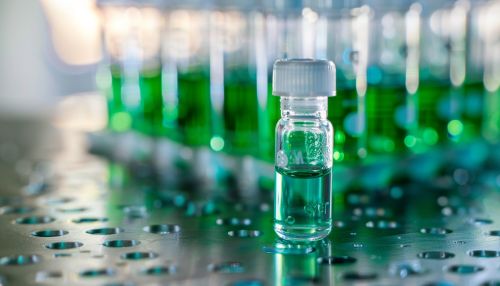SYBR Green
Introduction
SYBR Green is a cyanine dye used extensively in molecular biology for its ability to bind to DNA. This dye is highly fluorescent when bound to DNA, making it a useful tool for visualizing and quantifying DNA in various applications such as real-time polymerase chain reaction (qPCR), gel electrophoresis, and fluorescence microscopy.


History
The development of SYBR Green was a significant milestone in the field of molecular biology. Prior to its introduction, researchers relied on less sensitive and more labor-intensive methods to visualize and quantify DNA. The introduction of SYBR Green in the late 20th century revolutionized these processes, allowing for more accurate and efficient analysis of DNA.
Structure and Properties
SYBR Green is a symmetric cyanine dye, with a structure that allows it to intercalate between the base pairs of the DNA double helix. This intercalation causes the dye to become highly fluorescent, emitting a green light when excited by a specific wavelength of light. This property is what makes SYBR Green such a valuable tool in molecular biology.
Applications
Real-Time Polymerase Chain Reaction
One of the most common uses of SYBR Green is in real-time polymerase chain reaction (qPCR). In this application, the dye is used to monitor the amplification of DNA in real-time, allowing researchers to quantify the amount of DNA in a sample. The fluorescence of the dye increases as it binds to the amplified DNA, providing a direct measure of the amount of DNA present.
Gel Electrophoresis
SYBR Green is also used in gel electrophoresis, a technique used to separate DNA fragments based on their size. After the electrophoresis is complete, the gel is stained with SYBR Green, which binds to the DNA fragments and makes them visible under UV light.
Fluorescence Microscopy
In fluorescence microscopy, SYBR Green is used to stain DNA in cells or tissues, allowing for the visualization of DNA under a fluorescence microscope. This can be useful in various research and diagnostic applications, such as studying the structure and organization of DNA in cells, or detecting abnormalities in DNA that may indicate disease.
Safety and Environmental Considerations
While SYBR Green is a valuable tool in molecular biology, it is also a potential hazard. The dye is known to be mutagenic, meaning it can cause changes in the DNA that can lead to mutations. Therefore, it must be handled with care to avoid exposure. Additionally, due to its potential environmental impact, disposal of SYBR Green must be done in accordance with local regulations.
